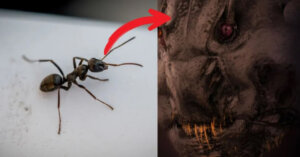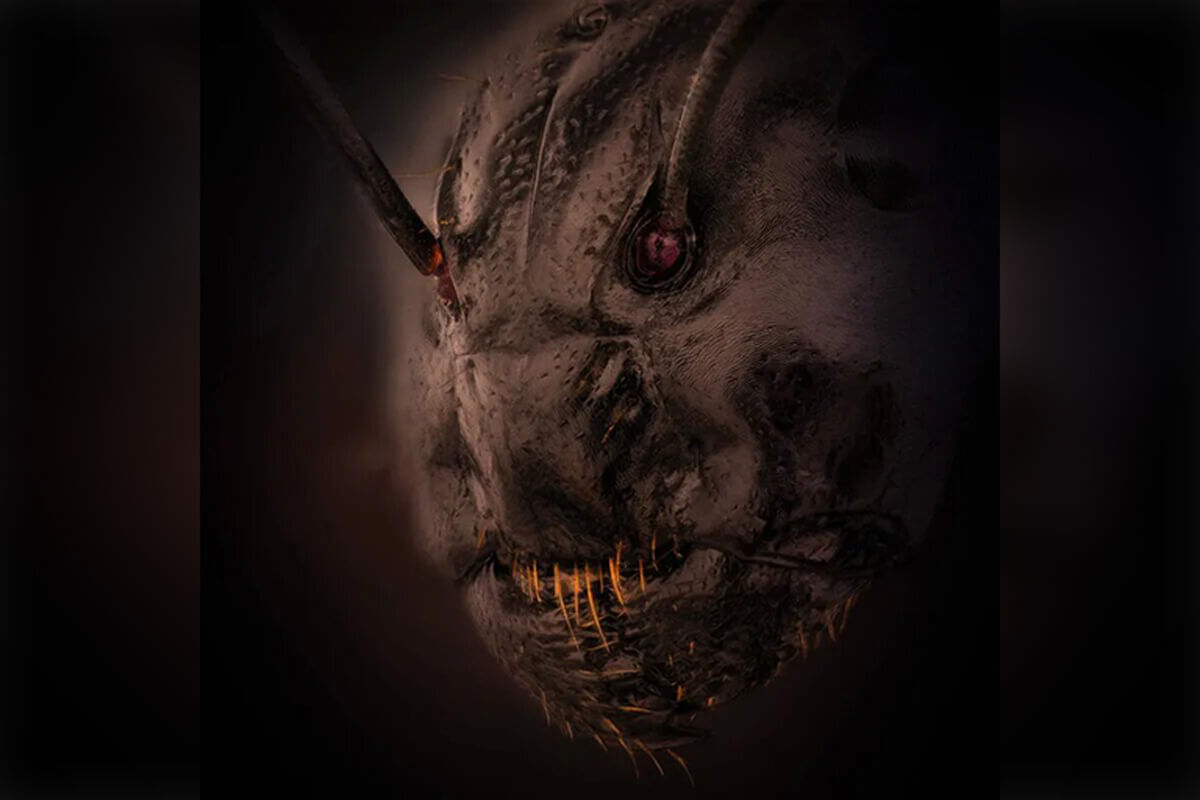Take a Look at this Terrifying Close-Up of an Ant!

A photographer managed to capture a close-up of an ant and the result is truly terrifying. The image, that has been shared on social networks, looks like a Halloween mask or the personification of some terrifying movie villain, but it’s nothing more than a close-up of an ant, or more specifically, of an ant’s face.
Read on and we’ll tell you more details about this news and how such a shocking result was achieved.
How was this close-up of an ant achieved?
The close-up photograph of a carpenter ant that’s terrifying everyone who sees it was captured by photographer and doctor Eugenijus Kavaliauskasel, from Lithuania. The man submitted the photo in Nikon’s Small World 2022 Photomicrography Contest, in which it was chosen as the ‘image of distinction’ of the whole competition.
It’s so striking that it has gone viral far more than the photos that made the top 20. This close-up of an ant, which belongs to the Camponotus genus, was achieved using a special lens with five times the magnification of a microscope, and using the reflected light technique. According to the contest website, the photograph has no digital editing or retouching.
Why is this image so scary?

This close-up of an ant captured by Dr. Eugenijus Kavaliauskasel has attracted a lot of attention because it’s so far removed from what we would have expected. Many of us have seen photographs, drawings, and illustrations of these insects and none look like this, not even in movies that recreate ants as villains.
This image is something completely new, perhaps never seen before. Because of this, our minds refuse to truly take in the image captured by the scientist. At this point, we need to clarify that you could be looking at the photograph of the ant wrongly, so let’s explain its anatomy a little.
What looks like big red eyes are actually the condylar bulbs of the insect from where its antennae come out, located in the antennal fossa. As the image is in profile, only one eye is visible, located in the lower part of the right condylar bulb.
What you see as yellow hairs are really bristles. From there downwards we find the ant’s jaw. Now that you know how to understand the photo, do you still think it’s so terrifying? Before answering that question, the author emphasized that “there are no horrors in nature, only a lack of knowledge“.
A photographer managed to capture a close-up of an ant and the result is truly terrifying. The image, that has been shared on social networks, looks like a Halloween mask or the personification of some terrifying movie villain, but it’s nothing more than a close-up of an ant, or more specifically, of an ant’s face.
Read on and we’ll tell you more details about this news and how such a shocking result was achieved.
How was this close-up of an ant achieved?
The close-up photograph of a carpenter ant that’s terrifying everyone who sees it was captured by photographer and doctor Eugenijus Kavaliauskasel, from Lithuania. The man submitted the photo in Nikon’s Small World 2022 Photomicrography Contest, in which it was chosen as the ‘image of distinction’ of the whole competition.
It’s so striking that it has gone viral far more than the photos that made the top 20. This close-up of an ant, which belongs to the Camponotus genus, was achieved using a special lens with five times the magnification of a microscope, and using the reflected light technique. According to the contest website, the photograph has no digital editing or retouching.
Why is this image so scary?

This close-up of an ant captured by Dr. Eugenijus Kavaliauskasel has attracted a lot of attention because it’s so far removed from what we would have expected. Many of us have seen photographs, drawings, and illustrations of these insects and none look like this, not even in movies that recreate ants as villains.
This image is something completely new, perhaps never seen before. Because of this, our minds refuse to truly take in the image captured by the scientist. At this point, we need to clarify that you could be looking at the photograph of the ant wrongly, so let’s explain its anatomy a little.
What looks like big red eyes are actually the condylar bulbs of the insect from where its antennae come out, located in the antennal fossa. As the image is in profile, only one eye is visible, located in the lower part of the right condylar bulb.
What you see as yellow hairs are really bristles. From there downwards we find the ant’s jaw. Now that you know how to understand the photo, do you still think it’s so terrifying? Before answering that question, the author emphasized that “there are no horrors in nature, only a lack of knowledge“.
All cited sources were thoroughly reviewed by our team to ensure their quality, reliability, currency, and validity. The bibliography of this article was considered reliable and of academic or scientific accuracy.
- https://www.washingtonpost.com/nation/
- López-Riquelme, Germán Octavio, & Ramón, Fidel. (2010). El mundo feliz de las hormigas. TIP. Revista especializada en ciencias químico-biológicas, 13(1), 35-48. Disponible en: http://www.scielo.org.mx/scielo.php?script=sci_arttext&pid=S1405-888X2010000100004&lng=es&tlng=es.
This text is provided for informational purposes only and does not replace consultation with a professional. If in doubt, consult your specialist.








